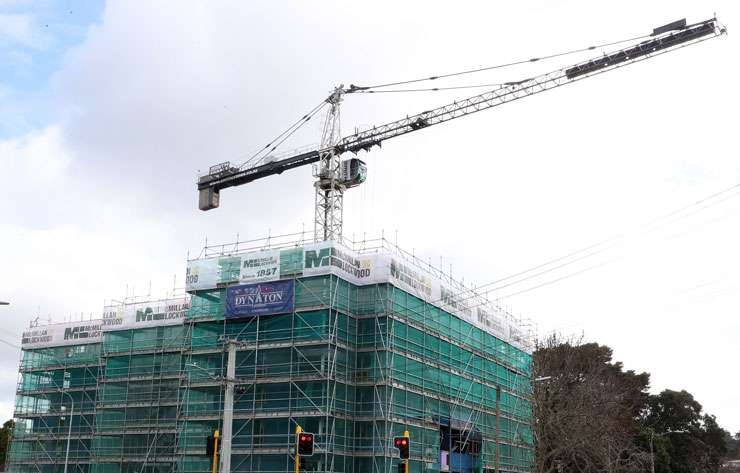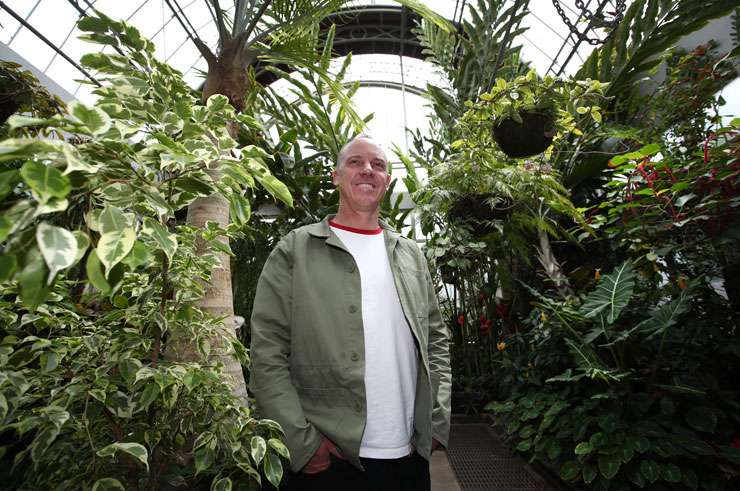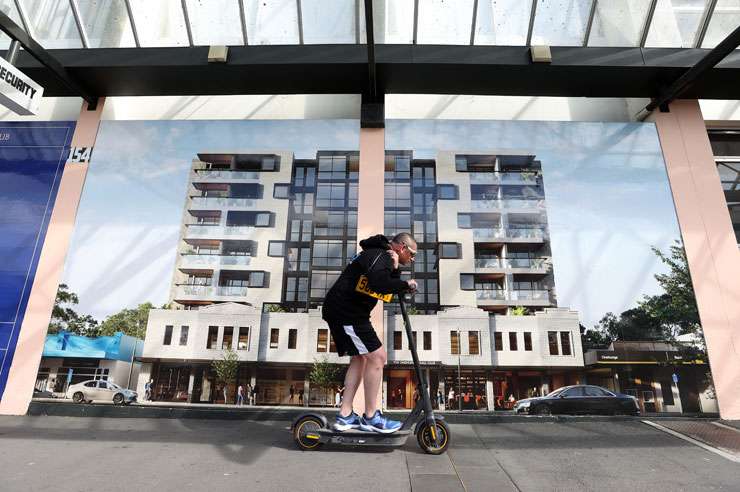Can we fix it?
Amid the pandemic and house-buying frenzy that has seen prices sky rocket, new OneRoof data shows new homes are being built at a rate that could be starting to ease the housing crisis.
The whole country is seeing a historic wave of building activity, particularly in Auckland, Hamilton and in and around Christchurch, where demand for housing is so great it has spilled over into the neighbouring districts of Waimakiriri and Selwyn, with tentacles reaching even into the tiny country town of Darfield, between Christchurch and the West Coast.
Terraced homes are now common in backyards all over suburban Auckland but particularly in the south of the city. New apartment buildings are sprouting up around the city, as are master-planned communities on what was once rolling farmland.
Start your property search
The type of homes being built is changing, too, from big stand-alone houses to multi-unit developments on smaller sections.
In Auckland, the Unitary Plan paved the way for high-density development. Now there is a Government directive for councils to clear the way for tall apartment blocks in city and metropolitan centres and around transport hubs.
The building boom is not without challenges and controversy. The rapid development is creating infrastructure headaches for cash-strapped councils and raises questions around who pays for it. Such building activity is also leading to concerns about unchecked urban sprawl.
There is also the shadow of Covid. Construction halted for weeks at sites across the country, and for longer in Auckland, due to the latest lockdown. Added to that are supply chain woes, with building materials in critically short supply due to shipping delays.

Construction on a new home development in central Auckland. Photo / Fiona Goodall
The escalating cost of materials is also causing pain, and developers are wary of what might be coming in terms of new development contribution fees. Big changes have been signalled by Auckland Council – developers of a new $10 billion town centre in Drury are already reeling from a proposed hike of up to 660 per cent.
Amid all this there is some good news, says James Wilson, valuation director for Valocity, OneRoof’s data partner.
For all the inconvenience of bulldozers, road cones and construction noise, Wilson says the data shows the building frenzy is starting to pay off in the form of homes that people can move into. “We’ve had a record number of consents for many years, and you are now beginning to see that flow through to the actual built number of properties,” he says.
Cost of buying new
The figures also show the money people are paying for new builds has soared in a year, with the nationwide median value of new-build properties sitting at $945,000 – up almost 20% or $156,000 on the year before.
Standout areas where building activity has been huge include Papakura in Auckland’s south and Selwyn in Canterbury.
Statistics NZ figures show for the year ended June 2021, the number of new dwellings consented nationwide was 44,299, up 18 per cent from the year before.
Auckland consents were up 29 per cent, the Waikato’s 10 per cent, the rest of the North Island 22 per cent and Canterbury was up 12 per cent.
In Wellington consents were up only one per cent, while the rest of the South Island fell two per cent.

Valocity director of valuations James Wilson: “We’ve begun to see more affordable stock hit the market.” Photo / Supplied
Auckland Council figures alone show infill capacity of 101,649 dwellings and a total net redevelopment capacity of 909,179 across Auckland’s zoned urban land.
Wilson says the Unitary Plan has had a “massive” influence on what is being built and where.
“It’s only in the last six-to-12 month window that we’ve begun to see more affordable and more realistic stock hit the market from the private sector, which is going to help be part of the bigger solution to the overall housing crisis.”
There is also the burgeoning demand for off-the-plan stock. Once viewed suspiciously, off-plan is flying out the door, often as soon as a development is launched.
Crowded space
Off-the-plan is popular with first-home buyers who, according to research company CoreLogic, are in the new-build market in higher numbers. In 2012 they comprised 9.2 per cent of the market while this year the figure is 25.1 per cent.
Nick Goodall, head of research at CoreLogic, says that’s because there are strong incentives to buy new – deposits can be smaller and the cap to use KiwiSaver is lower.
But there are incentives for investors to buy new as well, as they can write off interest costs and taxes, he says.
Goodall expects competition between the two buyer groups to heat up in the new-build market: “It’s going to be a very crowded space.”
While the new-build industry is booming, however, Covid-19 has led to constraints around materials and labour.
Goodall warns of two scenarios that could arise – more expensive materials being used, with costs passed on to end users, or inferior materials being used, which could spell trouble.
“That’s leaky buildings Phase Two. It’s obviously important that we have the right checks and balances from the councils doing the inspections to make sure everything is up to standard.”
Urban meets country
Some developers warn against too much urban sprawl, the likes of which Auckland has seen on a grand scale.
Mark Todd’s company, Ockham Residential, builds apartment buildings in the Auckland suburbs, regularly removing one old house and replacing it with dozens of new units.
Todd hates sprawl and challenges other developers still wanting to develop greenfield sites (undeveloped land on the outskirts of the city) to sharpen their thinking away from more sprawl.
“We’re still in Auckland just chopping up farms, everywhere from Paerata to Pukekohe, Kumeu, Silverdale, Flat Bush.
“It’s a really colonial attitude towards exploiting land for profit.”
Todd supports the Government’s National Policy Statement on Urban Development, which requires councils to increase intensification in suburbs and metropolitan centres and along public transport routes, saying subdividing paddocks is not the future.

Ockham Residential chief Mark Todd thinks developers and planners should resist sprawl. Photo / Fiona Goodall
“We want quality, compact development right across New Zealand. That’s what they do in Italy.
“You go straight from olive groves to three-storey apartment buildings in rural Italy. You don’t have sprawl everywhere.”
The Government directive is not just for Auckland, though, with other regions also expected to intensify residential building.
Haylea Muir, a principal at Auckland-based design studio Isthmus, is all for density done right, saying small towns should plan for it and embrace it – but she, too, warns against sprawl.
“We know where that’s been done through the 1990s and 2000s, in Auckland in particular. It’s resulted in some quite poor social outcomes and equity issues.”
That includes social isolation for people who live there and car-based communities, which is bad for the environment.
Muir says there is work to be done because in the regions district plans don’t facilitate density and planners aren’t overly familiar with it.
“The risk is that you set really poor precedents which then become the precedent.”
Infrastructure headaches
One of the biggest issues around new builds is infrastructure and who should pay for the roads, sewers and other services needed.
REINZ chief executive Jen Baird, Hamilton City Council’s former general manager, says all high-growth councils (they include Auckland, Hamilton, New Plymouth, Tauranga, Whangarei, Christchurch and Selwyn) are facing the same issues of demand - people moving in are outstripping the ability to build houses fast enough.
A key constraint is infrastructure – zoning the land is the easy bit, she says. Once the land is zoned there have to be plans for what infrastructure is needed, and that’s the expensive and challenging part.
“That’s the piece that hasn’t really been resolved.”

A billboard advertising a planned apartment block near a rail station in Auckland’s Onehunga. Photo / Fiona Goodall
In Auckland, many developers are bracing themselves for big hikes in the development contributions they pay – those are fees charged by councils to help pay for the infrastructure associated with developments.
Big increases are yet to be confirmed by Auckland Council but Andrew Crosby, chief executive of Universal Homes, says they have been well-telegraphed to the industry.
Fees vary but can be $30,000 per house. Crosby says he has heard rumours that could rise to $100,000 a unit in some areas.
Such a big increase would likely influence where developers decide to build. The potential rises are leading his company to be careful about buying land until they know how much the contributions will be.
“They’ve (Auckland Council) got reasonably accurate costings for a number of areas now because they’ve had to do all that for the Kāinga Ora areas, like Mangere, Mt Roskill and Glen Innes.
“Development contributions are going to cover as much of that as possible because there’s no room to increase rates for everyone else in Auckland to pay for it.”
But if the sale price of a house in a greenfield area, for example, can’t absorb a $100,000 development fee, developers won’t be able to supply there, he explains, which means they will look elsewhere for areas where contributions are cheaper. That’s likely to push up the land prices in those other areas.
Under-investment
Auckland Council, which is already facing a $1 billion Covid-related financial hole, has flagged up the problem of infrastructure unaffordability by not supporting the private plan changes of three big companies wanting to rezone around 330 hectares of land in Drury from Future Urban to a mix of residential, business and open spaces. The council says it can’t afford the estimated $1 billion to fund the infrastructure.
The debate gets complicated by lags in infrastructure that developers say they shouldn’t have to pay to make up for, compared to new infrastructure that is needed by new developments.

Economist David Norman: “They wouldn’t be paying as much for the land if they knew they would have to pay the full price for the infrastructure.” Photo / Supplied
Fletcher Residential, one of the country’s biggest builders, builds master-planned developments in both greenfield sites and in suburbs, mainly in Auckland and Christchurch.
CEO Steve Evans supports development contributions but says they shouldn’t be used to fund historic under-investment in infrastructure.
“I think it’s inevitable that development contributions will go up, and I think that’s probably the right thing when you look at the level of gain that developments and land have had over time.
“The devil, of course, is in the detail. How do you allocate which part of which infrastructure spend to new development, versus existing development versus existing residents?”
For Todd (who says no one should pay a cent towards greenfield developments because that would stop them being built), the issues are different because he builds in areas where there is already infrastructure. But his builds add pressure to roads and services which are paid for in various costs.
The costs added to a suburban apartment build is one of the key reasons new housing is expensive, he says.
One of his builds, on the corner of K Rd and Ponsonby Road in the inner city, will be seven storeys high, with 32 apartments and a total construction cost over 12 months of $10.8b. “It’s nearly bang on 10 per cent of that to turn the water and power on.”
Bayleys national director of projects, Suzie Wigglesworth, says the Government and councils need to work together better to accelerate the rate of stock coming to market.
Off the plan builds are rocketing out the door but there are still not enough. For every sub-$1m property that sells, Bayleys could sell it another four or five times over, she says.
And with buyers chomping at the bit, the number of people looking for land to develop is also “phenomenal”.
A recent survey of the company’s Auckland salespeople found the number of conversations around building small-to-medium developments had doubled in the last year.
One of the main problems is the delays in getting on with building due to the time taken to get consents. “If you ask any developer around town when do you want to be in the market, they will tell you they want to be in the market yesterday.”
It’s easier for the smaller builders to put up a row of townhouses, though, than for the larger developers to build a master-planned community, which provides a lot more housing, because they have to grapple with rezoning greenfield sites and putting in infrastructure like roading.
“There's certainly a lot in the pipeline, it's just a question of whether or not financially everyone can hang in there until they can deliver it,” she says.
The economist’s view
David Norman recently left Auckland Council as the city’s chief economist to become executive adviser to the economics and business case team at GHD, an international professional services company in the infrastructure industry.
He says the costs of infrastructure are “eyewatering”.
While the Government has signalled that it will provide additional funding, from shovel-ready projects to the infrastructure acceleration fund (a component of its $3.8b housing acceleration fund), these “great steps” have still left big challenges for debt-constrained councils.
Norman’s view is that ratepayers are subsidising developers and that those who benefit from infrastructure should be the ones who pay for it.
He stresses that developers are not the bad guys, but he doesn’t countenance arguments that if they were charged more house prices would rise more, saying instead land prices would fall.
“Developers wouldn’t be paying as much for the land if they knew they would have to pay the full price for the infrastructure,” Norman says.











